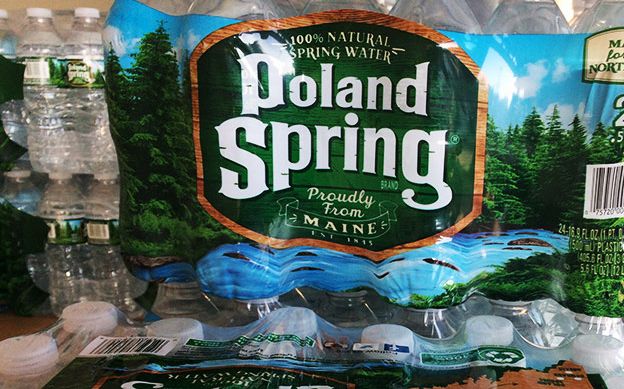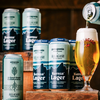
Poland Spring parent faces class-action suit over 'spring water' labeling
 Photo / Lori Valigra
Poland Spring is the top-selling bottled water in the Northeast, the company says, but the water's sources and other items have become the subject of a class-action lawsuit.
Photo / Lori Valigra
Poland Spring is the top-selling bottled water in the Northeast, the company says, but the water's sources and other items have become the subject of a class-action lawsuit.
Nestlé Waters North America Inc., the parent of Poland Spring Water Co., is the subject of a class-action lawsuit by 11 individuals alleging a number of claims, including deceptive product labeling, Poland not being the source of the water and that some of its water collection sites are not from spring water.
The 325-page lawsuit, filed Aug. 15 in the U.S. District Court for the District of Connecticut, asks for a jury trial against Nestlé Waters North America Inc., which has its U.S. headquarters in Stamford, Conn. It also lists $5 million as the amount on the lawsuit but does not list specific damages. The $5 million is the minimal amount for such a class-action lawsuit and could potentially go much higher, a lawyer familiar with the case said.
A Poland Spring spokeswoman said Thursday morning that the company has not yet been served regarding the case, but said it is without merit and the company is “highly confident in our legal position.”
If and when it is served, the normal practice is to file responses to the complaint, a lawyer familiar with the case said. He added that he doesn’t know if any of the plaintiffs directly filed any complaints prior to filing the lawsuit to the company’s customer service hotline regarding concerns about the source and labeling of the water.
The plaintiffs also brought claims on behalf of a nationwide class on fraud and breach of contract, as well as various claims brought on behalf of the state sub-class including the states of New Jersey, New York, Connecticut, Massachusetts, Rhode Island, Vermont, New Hampshire and Maine.
A spokesperson for Nestlé, which sells 15 different brands of bottled waters, said Poland Spring is the largest selling bottled water in the Northeast United States. The company did not release figures for the amount of water it bottles annually, but a 2014 article by Mainebiz noted that Nestlé’s net sales of bottled water in 2012 were $3.9 billion, and it was the largest bottled water company and third-largest U.S. non-alcoholic beverage company by volume.
The company also sells Perrier, S. Pelligrino and Pure Life waters.
What alleged violations in Maine claim
The Maine claim was for violations of the Maine Unfair Trade Practices Act and the Maine Uniform Deceptive Trade Practices Act. The lawsuit noted that 30 days before filing the complaint, plaintiffs’ counsel sent a letter to Nestlé Waters in compliance with Maine Revised Statutes, Title 5, 213-1-A, demanding relief, identifying the claimant and reasonably describing the unfair and deceptive act or practice relied up and the injuries suffered.
Among the claims, the plaintiffs allege that the “Evergreen Spring” site in Fryeburg fails the FDA’s spring quality standard of identity because the well is not hydraulically connected to a genuine natural spring, the water collected by the well is not from the same underground strata as the groundwater that discharges into the alleged spring, the water does not have the same chemical and physical composition as the water discharging into the alleged springs, and the well draws from surface waters.
The plaintiffs’ suit was filed by representatives of Alexander H. Schmidt in New Jersey; Izard, Kindall & Raabe in West Hartford, Conn.; Cotchett, Pitre & McCarthy in Burlingame, Calif., and in New York; and Susman Godfrey in Los Angeles.
Nestlé's response: Claims without merit

“The claims made in the lawsuit are without merit and an obvious attempt to manipulate the legal system for personal gain. Poland Spring is 100% spring water,” Brian Nurse, vice president and associate general counsel for Nestlé and Poland Spring, told Mainebiz.
He added that the lawsuit was an attempt to manipulate the trust of consumers in the brand and in Maine’s natural resources.
A company statement added, “It meets the U.S. Food and Drug Administration regulations defining spring water, all state regulations governing spring classification for standards of identity, as well as all federal and state regulations governing spring water collection, good manufacturing practices, product quality and labeling. We remain highly confident in our legal position.”
Nestlé has been the target of other lawsuits in the past, including a 2003 lawsuit in Connecticut challenging the source of Poland Spring water. The suit was settled with Nestlé not admitting to the allegations that the water is not from springs but heavily treated ground water, but offering $10 million in discounts to consumers and charitable donations for the five years after the suit was settled in September 2003.
What bottled water labels mean
U.S. consumers can buy at least 100 different types of bottled waters, according to industry estimates, which makes the profit on a case of water just pennies, Nestlé told Mainebiz in 2014.
The FDA’s definitions quickly go into the weeds on the definitions of bottled water, including mineral content. Nestlé said each state must meet the FDA standards, and some go above. Maine’s Division of Environmental Health, which listed more than 18 bottled water plants, handles the compliance in the state. Poland Spring also publishes a water quality report on its website.
The case comes at a time when bottled water sales by volume outpaced those of soda in 2016. Research firm Beverage Marketing Corp. of New York found Americans each drank an average of 39.3 gallons of bottled water in 2016 and 38.5 gallons of carbonated soft drinks. That compares with 36.5 gallons of bottled water in 2015 and 39 gallons of soda.
Poland Spring has been expanding its water sources, having on Aug. 16 inked a 15-year agreement with the Rumford Water District to draw up to 150 million gallons of water annually from two of the district’s wells.










Comments